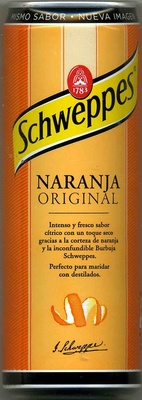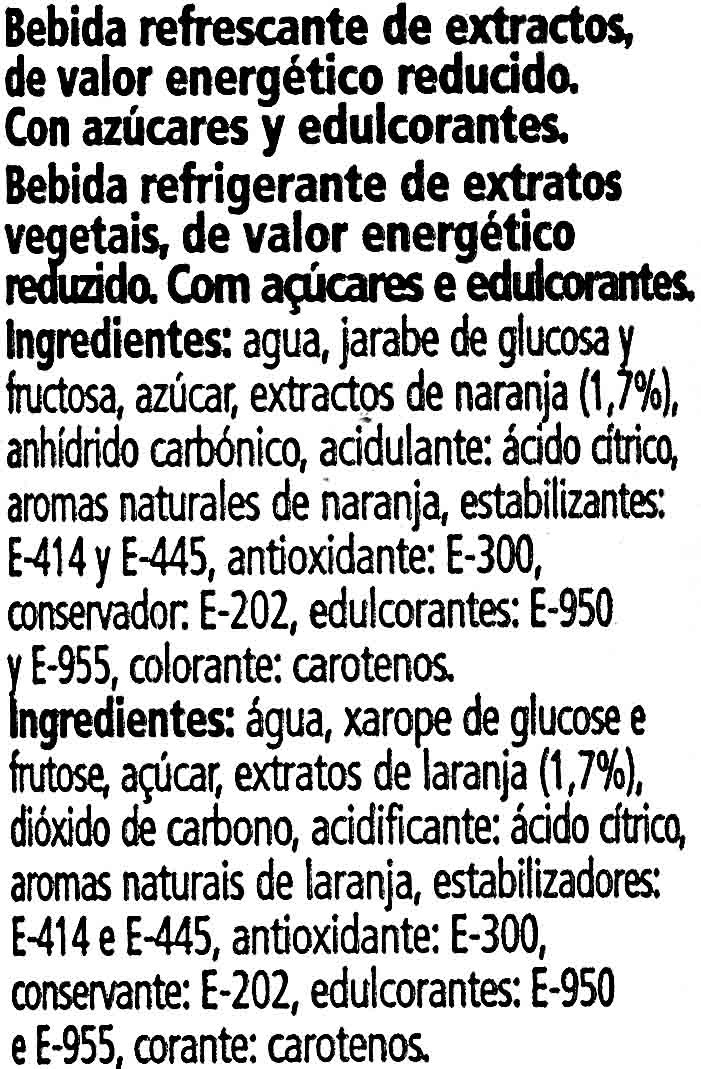Refresco de naranja Original 33cl - Schweppes - 33 cl
Aquesta pàgina del producte no està completa. Podeu ajudar a completar-la editant-la i afegint-hi més dades a partir de les fotos ja disponibles, o fent-ne més amb l'aplicació de androide o iPhone / iPad. Gràcies!
×
Codi de barres: 8414100301851 (EAN / EAN-13)
Nom comú: Bebida refrescante de extractos con valor anergético reducido. Con azúcares y edulcorantes
Quantitat: 33 cl
Empaquetament: en:Can
Marques: Schweppes
Categories: Aliments i begudes amb base vegetal, Begudes, Begudes amb base vegetal, Begudes carbonatades, Begudes amb base de fruites, Refrescs, en:Fruit sodas, en:Orange soft drinks, Begudes ensucrades
Etiquetes, certificacions, premis: Vegetarià, Vegà
Llocs de fabricació o processament: Toledo, Toledo (provincia), Castilla-La mancha, España
Codi de traçabilitat: ES 29.00042/TO CE, SCHWEPPES S.A., PERTENECIENTE A:, ORANGINA SCHWEPPES GROUP, SUNTORY HOLDINGS LTD.
Enllaç a la pàgina del producte en el lloc oficial del productor: http://www.schweppes.es/tonica/nuestras-...
Botigues: Supersol
Països on es va vendre: Espanya










